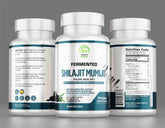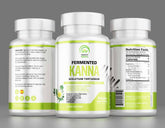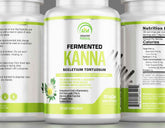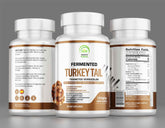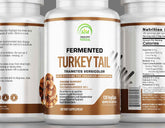Reading Labels and Ingredients
Supplement Label Guide: Understanding Ingredients and Claims
Dietary supplements have become an integral part of modern health regimes. Whether the goal is to fill nutritional gaps, enhance athletic performance, or promote overall well-being, understanding how to read labels and ingredients on dietary supplements is essential for making informed choices and ensuring safety. This blog will explore the critical aspects of reading labels and ingredients in dietary supplements, empowering you to navigate the market with confidence and make choices that support your health.
The Importance of Reading Supplement Labels
Reading supplement labels is crucial because they provide essential information about the product's contents, dosage, and potential benefits and risks. Accurate label reading ensures that you are aware of what you are consuming and helps prevent adverse effects from unknown ingredients or incorrect dosages.
Regulatory Framework and Labeling Standards
In the United States, the Food and Drug Administration (FDA) regulates dietary supplements under the Dietary Supplement Health and Education Act (DSHEA) of 1994. This act mandates that supplement labels provide specific information, ensuring transparency and consumer safety. Similar regulatory bodies exist in other countries, such as the European Food Safety Authority (EFSA) in Europe and the Therapeutic Goods Administration (TGA) in Australia.
Key components of a dietary supplement label include:
- Statement of Identity: This is the name of the dietary supplement, such as "Vitamin C" or "Fish Oil."
- Net Quantity of Contents: Indicates the amount of the product, such as the number of capsules or tablets and the total weight or volume.
- Nutrition Labeling: Often presented as a "Supplement Facts" panel, detailing the ingredients and their amounts.
- Ingredients List: A detailed list of all ingredients, including active and inactive components.
- Manufacturer Information: Contact details of the manufacturer, packer, or distributor.
- Directions for Use: Instructions on how to take the supplement, including dosages.
- Warnings and Cautions: Information on potential side effects, allergens, and contraindications.
Understanding the Supplement Facts Panel
The Supplement Facts panel is a standardized format that provides a detailed overview of the nutrients and other ingredients in the product. It is crucial to understand each part of this panel to evaluate the supplement's suitability for your needs.
Serving Size and Servings Per Container
The serving size indicates the amount of the supplement that is recommended per dose, such as one capsule or one scoop of powder. The number of servings per container tells you how many doses the package contains. It's essential to follow the serving size guidelines to avoid under- or over-consumption.
Nutrient Quantities and Percent Daily Values (%DV)
The Supplement Facts panel lists the amount of each nutrient per serving, typically measured in milligrams (mg), micrograms (mcg), or International Units (IU). The %DV indicates how much of the recommended daily intake of each nutrient is provided by one serving of the supplement, based on a 2,000-calorie diet.
For example, if the %DV for vitamin C is 50%, one serving provides half of the recommended daily intake. This information helps you gauge how the supplement fits into your overall dietary intake.
Key Nutrients and Their Functions
Understanding the role of key nutrients listed on the Supplement Facts panel can help you make informed decisions about which supplements to take. Some common nutrients found in supplements include:
- Vitamins: Essential for various bodily functions. For example, vitamin C supports the immune system, while vitamin D aids in calcium absorption for bone health.
- Minerals: Important for maintaining health. Calcium, for example, is necessary for strong bones and teeth, while iron is crucial for oxygen transport in the blood.
- Amino Acids: The building blocks of proteins, such as L-arginine, which supports cardiovascular health, and L-glutamine, which aids in muscle recovery.
- Herbal Extracts: Often included for their medicinal properties, such as echinacea for immune support or ginseng for energy enhancement.
Additional Ingredients
Beyond the main nutrients, supplements often contain other ingredients that serve various purposes, including:
- Binders and Fillers: Used to hold the supplement together or fill out capsules and tablets. Common examples include cellulose and gelatin.
- Preservatives: Added to extend the shelf life of the product, such as tocopherols (vitamin E) and citric acid.
- Flavors and Sweeteners: Improve the taste of the supplement, particularly in powders and chewables. Examples include stevia and natural fruit flavors.
- Colorings: Used to make the product more visually appealing. These can be natural (such as beet juice powder) or artificial (such as FD&C Yellow No. 5).
Evaluating Ingredient Quality and Source
The quality and source of ingredients in dietary supplements can significantly impact their efficacy and safety. Here are some factors to consider when evaluating ingredient quality:
Bioavailability
Bioavailability refers to the extent and rate at which a nutrient is absorbed and utilized by the body. Some forms of nutrients are more bioavailable than others. For example, magnesium citrate is more bioavailable than magnesium oxide. When choosing supplements, look for forms of nutrients known for their high bioavailability.
Sourcing and Purity
The source of ingredients can affect their purity and potency. High-quality supplements typically use ingredients sourced from reputable suppliers with rigorous testing for contaminants such as heavy metals, pesticides, and microorganisms. Look for supplements that are third-party tested and certified by organizations such as NSF International, USP (United States Pharmacopeia), or ConsumerLab.
Natural vs. Synthetic Ingredients
Some supplements contain natural ingredients derived from whole foods, while others use synthetic versions created in a laboratory. Both types can be effective, but some people prefer natural ingredients for their perceived health benefits. For example, natural vitamin E (d-alpha-tocopherol) is often considered more bioavailable than its synthetic counterpart (dl-alpha-tocopherol).
Additives and Excipients
While additives and excipients are necessary for manufacturing, it's essential to be aware of their presence and potential effects. Some individuals may be sensitive to certain additives, such as artificial colors or sweeteners. Opt for supplements with minimal and natural additives whenever possible.
Interpreting Supplement Claims
Supplement labels often feature various claims about the product's benefits. Understanding these claims can help you determine their validity and relevance to your health needs.
Structure/Function Claims
Structure/function claims describe the role of a nutrient or dietary ingredient in maintaining normal body structure or function. For example, "calcium builds strong bones" or "fiber helps maintain regularity." These claims must be truthful and not misleading, but they do not require FDA approval.
Health Claims
Health claims describe a relationship between a nutrient or ingredient and a reduced risk of a disease or health condition. For example, "adequate calcium throughout life may reduce the risk of osteoporosis." Health claims must be backed by significant scientific evidence and approved by the FDA.
Nutrient Content Claims
Nutrient content claims highlight the amount of a nutrient in a product, such as "high in vitamin C" or "low in sodium." These claims must meet specific criteria set by the FDA. For example, a product labeled "high in" must contain at least 20% of the Daily Value for that nutrient per serving.
Recognizing Red Flags on Supplement Labels
Not all supplements are created equal, and some may contain misleading information or harmful ingredients. Here are some red flags to watch out for when reading supplement labels:
Proprietary Blends
A proprietary blend is a mixture of ingredients listed under a single name, with only the total amount of the blend disclosed. The individual amounts of each ingredient are not specified, making it difficult to determine their efficacy. Be cautious with products that rely heavily on proprietary blends, as they may contain ineffective dosages or unnecessary fillers.
Excessive Claims
Be wary of supplements that make grandiose claims, such as "miracle cure" or "rapid weight loss." These statements are often too good to be true and may not be supported by scientific evidence. Legitimate supplements will have realistic claims based on their ingredients' known benefits.
Long Lists of Additives
Supplements with long lists of additives, preservatives, and artificial ingredients may not be the healthiest choice. Look for products with minimal, natural additives and avoid those with known allergens or irritants.
Unfamiliar Ingredients
If a supplement contains ingredients you are unfamiliar with, take the time to research them. Some lesser-known ingredients may have legitimate benefits, but others could be ineffective or even harmful. Ensure that all ingredients are safe and beneficial for your health needs.
Making Informed Choices: Practical Tips for Reading Supplement Labels
Reading supplement labels effectively requires attention to detail and a critical eye. Here are some practical tips to help you make informed choices:
Cross-Check Ingredients with Your Health Needs
Before purchasing a supplement, cross-check its ingredients with your specific health needs. Ensure that the supplement provides the nutrients you require and in appropriate amounts. Avoid products that contain unnecessary or potentially harmful ingredients.
Verify Third-Party Testing
Look for supplements that have been independently tested and certified by third-party organizations such as NSF International, USP, or ConsumerLab. These certifications indicate that the product has been tested for purity, potency, and quality.
Research the Manufacturer
Investigate the supplement manufacturer to ensure they have a good reputation and adhere to high-quality standards. Reliable manufacturers will have transparent practices, such as providing detailed information about their sourcing and manufacturing processes.
Pay Attention to Expiration Dates
Always check the expiration date on supplement labels. Consuming expired supplements can be ineffective or even harmful. Ensure that the product has a reasonable shelf life remaining before making a purchase.
Be Cautious with High Doses
More is not always better when it comes to supplements. High doses of certain nutrients can cause adverse effects or interact negatively with medications. Stick to the recommended dosages and consult with a healthcare professional if you are unsure.
Common Ingredients in Dietary Supplements and Their Benefits
Understanding the common ingredients in dietary supplements can help you make more informed decisions. Here are some widely used ingredients and their potential benefits:
Vitamins
- Vitamin C: An antioxidant that supports immune function, skin health, and wound healing.
- Vitamin D: Crucial for calcium absorption and bone health. It also plays a role in immune function.
- Vitamin E: An antioxidant that protects cells from damage and supports immune function.
- Vitamin K: Essential for blood clotting and bone health.
- B Vitamins: Including B1 (thiamine), B2 (riboflavin), B3 (niacin), B6 (pyridoxine), B7 (biotin), B9 (folic acid), and B12 (cobalamin) - important for energy metabolism, brain function, and DNA synthesis.
Minerals
- Calcium: Necessary for strong bones and teeth, muscle function, and nerve transmission.
- Magnesium: Involved in over 300 enzymatic reactions, including energy production, muscle function, and heart health.
- Zinc: Supports immune function, wound healing, and DNA synthesis.
- Iron: Essential for oxygen transport in the blood and energy production.
- Selenium: Acts as an antioxidant and supports thyroid function.
- Potassium: Vital for maintaining proper heart and muscle function and fluid balance.
- Chromium: Plays a role in glucose metabolism and insulin function.
Amino Acids
- L-Arginine: Supports cardiovascular health and improves blood flow.
- L-Glutamine: Aids in muscle recovery and supports immune function.
- Branched-Chain Amino Acids (BCAAs): Leucine, isoleucine, and valine are essential for muscle protein synthesis and recovery.
- L-Tryptophan: Precursor to serotonin, supports mood and sleep.
- L-Carnitine: Helps transport fatty acids into mitochondria for energy production.
Herbal Extracts
- Echinacea: Traditionally used to support immune function and reduce the duration of colds.
- Ginseng: Known for its energy-boosting and stress-relieving properties.
- Turmeric: Contains curcumin, which has anti-inflammatory and antioxidant properties.
- Ginkgo Biloba: Supports cognitive function and circulation.
- Saw Palmetto: Used for prostate health.
- Milk Thistle: Supports liver health.
Probiotics
- Lactobacillus: Supports digestive health and boosts the immune system.
- Bifidobacterium: Promotes a healthy balance of gut bacteria and aids in digestion.
- Saccharomyces boulardii: A yeast that supports gut health and helps combat diarrhea.
Omega-3 Fatty Acids
- EPA (Eicosapentaenoic Acid): Supports heart health and reduces inflammation.
- DHA (Docosahexaenoic Acid): Crucial for brain health and development.
- ALA (Alpha-Linolenic Acid): Found in plant oils, converted to EPA and DHA in the body.
Potential Risks and Side Effects of Common Ingredients
While many dietary supplements offer health benefits, it is essential to be aware of potential risks and side effects associated with their ingredients.
Vitamins
- Vitamin A: High doses can cause toxicity, leading to liver damage, bone loss, and birth defects.
- Vitamin D: Excessive intake can result in hypercalcemia, causing kidney stones and cardiovascular issues.
- Vitamin E: High doses may increase the risk of bleeding and hemorrhagic stroke.
- Vitamin K: Can interact with blood-thinning medications, affecting their efficacy.
Minerals
- Calcium: Excessive intake can lead to kidney stones and impaired absorption of other minerals.
- Magnesium: High doses can cause diarrhea, nausea, and abdominal cramping.
- Zinc: Excessive zinc can suppress the immune system and cause nausea and vomiting.
- Iron: Overconsumption can result in toxicity, causing gastrointestinal distress, liver damage, and even death.
Amino Acids
- L-Arginine: High doses may cause gastrointestinal discomfort, gout, and increased risk of bleeding.
- L-Glutamine: Generally safe, but excessive intake may lead to mild gastrointestinal symptoms.
- BCAAs: High doses can cause fatigue, loss of coordination, and gastrointestinal issues.
- L-Tryptophan: May cause drowsiness and, in rare cases, eosinophilia-myalgia syndrome (EMS) when contaminated.
Herbal Extracts
- Echinacea: Can cause allergic reactions, especially in individuals with allergies to plants in the daisy family.
- Ginseng: May cause insomnia, headaches, and gastrointestinal issues; can interact with blood thinners and diabetes medications.
- Turmeric: High doses can cause gastrointestinal upset and interact with blood-thinning medications.
- Ginkgo Biloba: Can increase the risk of bleeding, especially when taken with anticoagulants.
- Saw Palmetto: May cause mild gastrointestinal symptoms and interact with hormone-related medications.
- Milk Thistle: Generally safe, but can cause allergic reactions and gastrointestinal issues.
Probiotics
- Lactobacillus and Bifidobacterium: Generally safe, but may cause gas and bloating in some individuals.
- Saccharomyces boulardii: Safe for most people, but can cause fungal infections in immunocompromised individuals.
Omega-3 Fatty Acids
- EPA and DHA: High doses may increase the risk of bleeding and interact with blood-thinning medications.
- ALA: Generally safe, but high doses may lead to gastrointestinal discomfort.
Practical Examples: Interpreting Supplement Labels
To further illustrate how to read and interpret supplement labels, let's examine a few practical examples.
Example 1: Multivitamin Supplement
Label Overview:
- Serving Size: 1 tablet
- Servings Per Container: 60
- Vitamin A: 900 mcg (100% DV)
- Vitamin C: 90 mg (100% DV)
- Vitamin D: 20 mcg (100% DV)
- Vitamin E: 15 mg (100% DV)
- Vitamin K: 120 mcg (100% DV)
- Calcium: 200 mg (15% DV)
- Iron: 18 mg (100% DV)
- Zinc: 11 mg (100% DV)
- Other Ingredients: Microcrystalline cellulose, stearic acid, silicon dioxide, magnesium stearate.
Interpretation: This multivitamin provides a broad spectrum of essential vitamins and minerals, covering 100% of the Daily Value for many nutrients. The inclusion of iron makes it suitable for individuals at risk of iron deficiency, such as menstruating women. However, the calcium content is relatively low, so additional calcium supplementation might be necessary for those with higher calcium needs.
Example 2: Omega-3 Fish Oil Supplement
Label Overview:
- Serving Size: 2 softgels
- Servings Per Container: 90
- Calories: 20
- Total Fat: 2 g
- EPA: 360 mg
- DHA: 240 mg
- Other Omega-3s: 100 mg
- Other Ingredients: Gelatin, glycerin, purified water, natural lemon flavor, mixed tocopherols.
Interpretation: This fish oil supplement provides a substantial amount of EPA and DHA, essential for heart and brain health. The label also lists other omega-3 fatty acids, contributing to the overall omega-3 intake. The presence of mixed tocopherols (vitamin E) helps preserve the oil and prevent oxidation. The natural lemon flavor is added to mask the fishy taste.
Example 3: Protein Powder Supplement
Label Overview:
- Serving Size: 1 scoop (30 g)
- Servings Per Container: 30
- Calories: 120
- Total Fat: 2 g
- Total Carbohydrate: 3 g
- Protein: 24 g
- Ingredients: Whey protein isolate, whey protein concentrate, natural and artificial flavors, soy lecithin, acesulfame potassium, sucralose.
Interpretation: This protein powder supplement provides a high amount of protein per serving, suitable for muscle building and recovery. The inclusion of whey protein isolate and concentrate ensures a high-quality protein source. However, it contains artificial sweeteners (acesulfame potassium and sucralose), which some individuals may prefer to avoid. The presence of soy lecithin as an emulsifier is common in protein powders.
Conclusion
Reading labels and ingredients in dietary supplements is a vital skill for anyone looking to improve their health and well-being through supplementation. By understanding the regulatory framework, interpreting the Supplement Facts panel, evaluating ingredient quality, and recognizing red flags, you can make informed choices and select high-quality products that meet your nutritional needs.
In today's market, where countless supplements vie for attention, taking the time to read and understand labels can make all the difference in achieving your health goals safely and effectively. Armed with the knowledge from this guide, you can navigate the world of dietary supplements with confidence, ensuring that you choose products that truly benefit your health.
Ultimately, the goal is to empower individuals with the knowledge and resources they need to make informed decisions about their health. This involves not only providing access to high-quality supplements but also fostering a deeper understanding of nutrition and the role that dietary supplements can play in maintaining and improving health. By continuing to prioritize education, research, and innovation, the dietary supplements industry can support healthier, more informed communities and contribute to the overall well-being of the global population.
- Choosing a selection results in a full page refresh.



